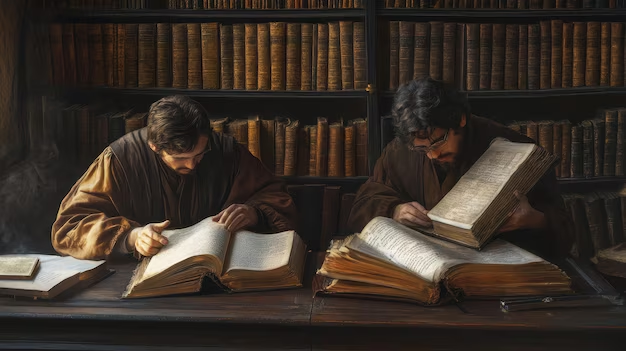Imagine strolling along the bustling canals of Venice in 1501, where the salty Mediterranean breeze carries the distant sounds of traders, scholars, and the clang of printing presses. Hidden within this city’s labyrinthine streets stood the workshop of Aldus Manutius, a visionary printer with ink-stained fingers and a mind fixed on revolutionizing knowledge itself.
One crisp morning, Manutius unveiled a brand-new manuscript—the illustrious “De arte combinatoria,” a weighty work by the famed mathematician and philosopher, Luca Pacioli. This was no ordinary book; for the first time, readers were invited into the vibrant world of combinatorial mathematics, a realm where numbers danced in endless patterns and possibilities. Pacioli’s treatise would soon lay the stepping stones for the great avenues of probability and game theory, igniting the imaginations of future generations.
As news of Pacioli’s text spread across Europe, another quiet revolution was brewing. For centuries, scholars had wrangled with Roman numerals, struggling to perform even the simplest calculations—imagine merchants computing profits or astronomers plotting the stars with nothing but cumbersome X’s and V’s!
But now, mathematical texts began to embrace the straightforward beauty of Hindu-Arabic numerals: 1, 2, 3, and beyond. These “new” digits were more than just symbols—they became the very foundation of modern mathematics, unlocking swifter commerce, sharper navigation, and more expansive scientific inquiry. Markets and classrooms alike buzzed with talk of these efficient numerals, their clarity promising to transform the way people calculated, traded, and envisioned the world.
Yet perhaps the most thrilling change of all was invisible to the eye—a revolution of words and ideas. Across Europe, diligent translators toiled over ancient Greek and Arabic manuscripts, bringing the works of Euclid, Archimedes, and other luminaries into Latin. As thick tomes passed from hand to hand, the minds of mathematicians sparked with newfound knowledge: geometry’s elegant proofs, the mysteries of ratios, and the secrets of classical science.
No longer were such concepts reserved for distant lands or long-lost scholars. Instead, the geometry of the ancients began to inform the architecture, engineering, and even the artistry of the Renaissance. Multiplication tables were standardized, methods for rapid calculation were taught, and the very foundations of education began to shift.
So it was that 1501 became a watershed year—a moment when Europe stepped boldly into the age of modern mathematics. The city of Venice became a beacon, Pacioli and Manutius its torchbearers. Hindu-Arabic numerals simplified life’s calculations, paving the way for commerce, scientific discovery, and even new art forms.
